All about chisels
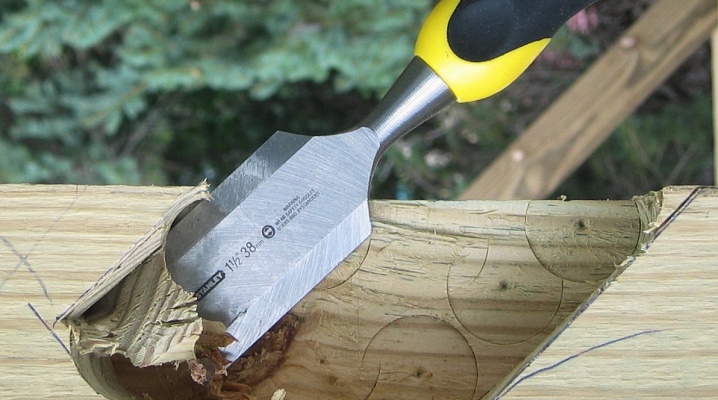
Wood carving is an interesting and profitable activity. You can independently create everything from wood - from miniature crafts to full-fledged furniture. The quality of the future result also depends on the quality of the tools, therefore, the choice of devices must be treated very carefully. One of the main tools of a woodcarving master is a chisel.
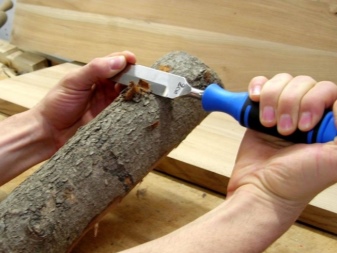
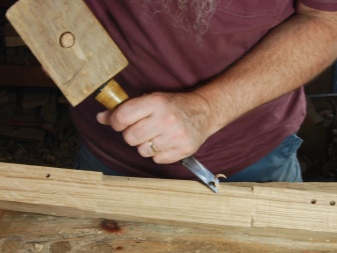
What it is?
A chisel is a truly versatile tool that can be used for a wide variety of purposes. With this device, you can turn a piece of wood into a real work of art. The tool allows you to work with the most difficult-to-reach areas of the material.
With the help of chisels, you can even out the edges of furniture. The chisel is indispensable if you have to round off a detail or cut a beautiful pattern on wood.
In addition, chisels are actively used not only when working with wood. It is an indispensable tool when working with leather, plastic or soft metal. It can be used both for inserting a lock and for cutting out wooden spoons.
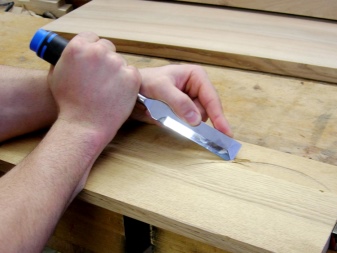

This unit is necessary in any business where you have to work with your hands. A carpenter's chisel can be a great alternative to a tool such as a chisel. However, there are differences between these options: the chisel cuts slightly less wood than the chisel. The cutting angles are also different for these tools.
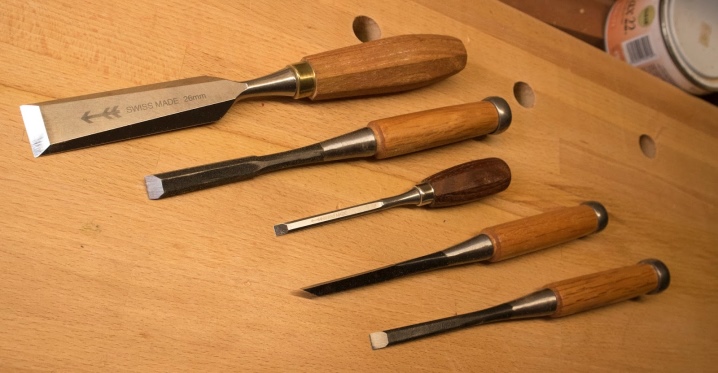
Views
Professional chisels are divided into 2 types - machine and artistic. Chisels created to create different elements from wood can vary in the shape of the cutting device. For example, thanks to straight cutters, you can create smooth edges on a wooden element. Beveled cutters allow you to cut narrow grooves or create even corner edges.
Rounded or semi-circular incisors make it possible to create beautiful circles in wood or to carve patterns in the shape of a sphere. Such variations of the chisel are called graters.
Angle cutters allow you to create blind recesses. Curved blades work well with spherical elements. Each specialist selects tools depending on the purpose of the work and its specifics.
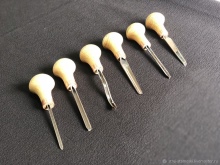
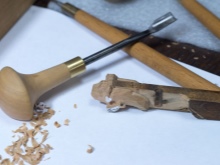
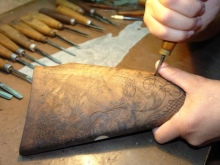
The shape of the knife is of great importance when working and when choosing a tool. The most common options are these types of chisels.
- Striped. This tool is used when creating blanks and when forming recesses.
- Round. A chisel of this configuration is necessary when processing blanks, as well as for cutting grooves.
- Semicircular. The tool is suitable for preparing a product for subsequent processing. With a rounded device, you can cut beautiful ornaments or create serifs. The device is found in round, sloping or medium configurations. A semicircular chisel can be found in the bins of every master.
- Universal. The device has the ability to replace the working attachment. In the complex, a variety of attachments of varying sizes go to the chisel.
- Corner. The tool is somewhat similar to the Latin V (two working blades are set at an angle and adjoin each other at the tops). A chisel with this blade is designed to produce V-shaped notches. The better the blades are sharpened, the deeper the notch will be.
- Clucarza. Externally, the chisel is very similar to the previous version. However, its surface has rounded portions of the end face and the blade shaft.This shape allows the chisel to move smoothly over the material. Klukarza has several types - in some variants the working part is rounded, in other models the blade remains straight or comes out in the shape of a square.
- Caesaric. Slightly rounded device with a very narrow cutter (only 3 mm). This device is necessary for creating narrow grooves and for working with the smallest elements of the overall pattern.
- Oblique. The working surface is located at an angle of 45 degrees. This tool is used if it is necessary to cut longitudinal grooves. However, you can adapt the device for the initial processing of the product.
- Klepik. A small tool with a thin blade shaped like a miniature leaf. You can use the device when large tools cannot cope with the work.
- Shtikhel. The device has a beveled blade, and the handle is made in the shape of a mushroom. This option is needed if grooves are being cut. The harder you press on the grader during work, the deeper the ornament will turn out.
- Marigold. A miniature tool with a rounded working element.
- Reverse chisel. The notch of the tool is convex, it is necessary to form a protruding pattern on a flat sheet of material.
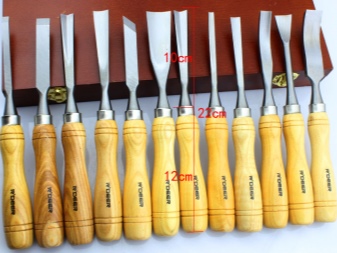
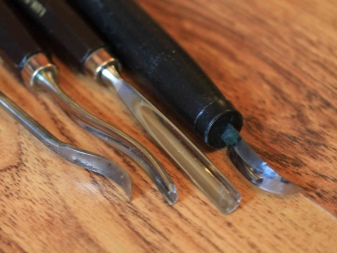
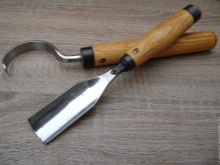

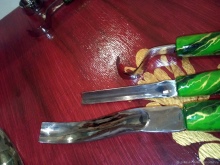
There are also forged percussion tools for a 20 mm perforator, stamped, apiary, punching tools. Forged devices have thick incisors and are usually used for working hardwoods. Notched models are suitable for working with soft types of wood. The device for stamped chisels has a thrust washer. Apiary models are designed for beekeepers. There are products for concrete work.
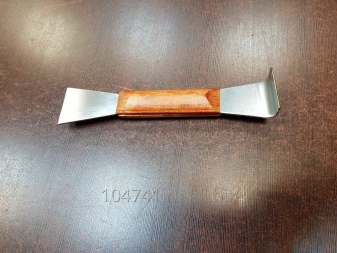
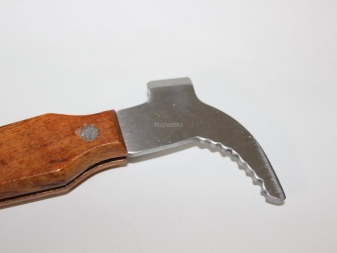
The craftsman can purchase a curly tool with a short blade or give preference to an electric device. But for work, you will always need time-tested adaptation options that make up a special set. Experience and practice allow mastering any, even the most complex instrument.
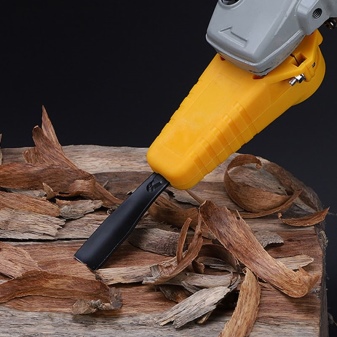
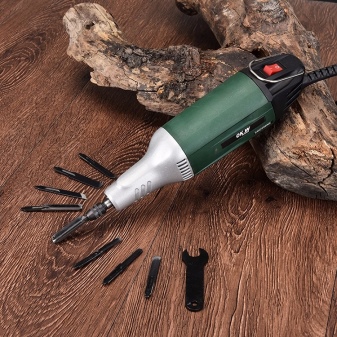
Chisels can also be homemade, which will look no worse than factory counterparts. However, in terms of quality, such models are inferior to the factory ones. The fact is that factory tools are most often produced in a complex, so the master can simply purchase a set of chisels.
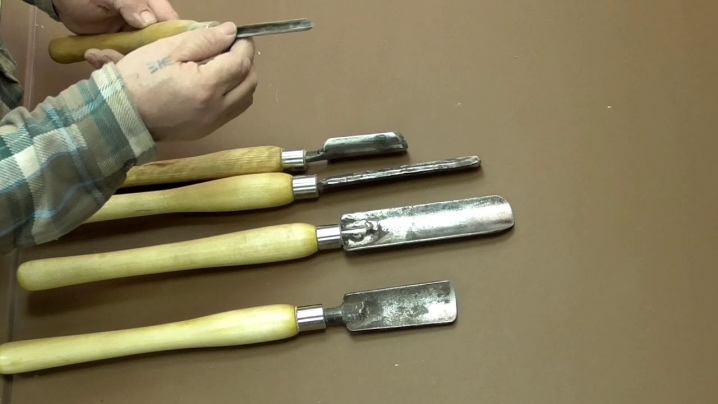
For the blade you need:
- file (an excellent starting point for carpentry tools);
- drills (you need to take models designed for working on metal, they will make a wonderful set of miniature chisels);
- file (needed for a base for a thin chisel);
- a milling cutter designed for metal processing;
- metal profile (the corner blade will come out of it).
It is best to create miniature chisels with your own hands. Small sticks are often used for the handle.
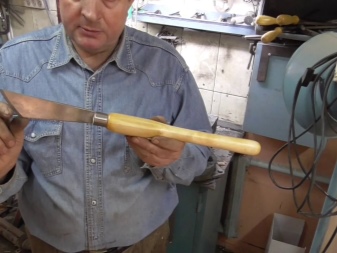
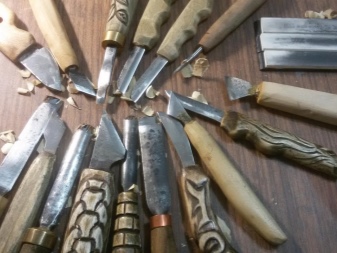
Sharpening angle
Competent sharpening of the chisel blade allows for a high-quality cut and provides easy tool control. However, it can be tricky to sharpen corner blades at times.
If sharpening is generally correct and the corners of the blade are sharpened, thicker chips can be removed. And it doesn't take much effort to work.
You can sharpen a chisel of any configuration with improvised means or special devices. Most often, grindstones, sheets with abrasive surfaces or pieces of wood covered with sandpaper are used at home. You can use polishing felt or fabric bases for the same purposes. There are also special lathes, which are subdivided into horizontal and vertical.
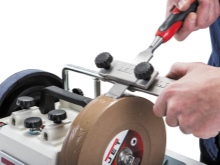
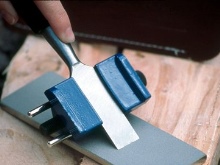
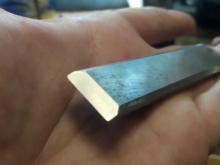
There are several nuances when sharpening chisels correctly.
- When sharpening, a certain angle must be observed - from 25 degrees to 5 (these parameters are provided in GOST). Usually the sharpening angle depends on the thickness of the blade. On wide working surfaces, an oblique bevel must be observed.
- The procedure may require an abrasive surface for the initial treatment, abrasive materials, and a mandrel at the end of the action to fix the angle.
- If the product is handmade, then small wedges can be used to calculate the angle. Corner adjustment is provided on the factory fixtures. The sample itself is very simple - the carriages must be transferred to an abrasive material (it is necessary to act on all surfaces). The clamp is formed at a certain angle.
- You can sharpen the chamfer yourself or use a special tool. If automatic sharpening does not give the desired result, you can modify the model yourself.
- Water-powered sharpening stones are ideal for working cutting surfaces. First you need to put stones in the water. Then, in the process, the water will come out and mix with the abrasive, forming a mass.
- Grinding and finishing are different procedures. Grinding is necessary to remove roughness from the product, and finishing creates a precise, even surface.



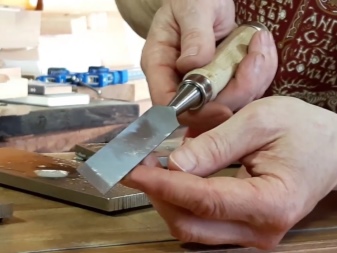
To carry out this procedure yourself, you need:
- sand the chamfer well;
- check the lines of the cutting surface.
Then you should wrap the board or block with sandpaper. The resulting device can be used to sharpen the tool. Then you need to wipe the chisel.
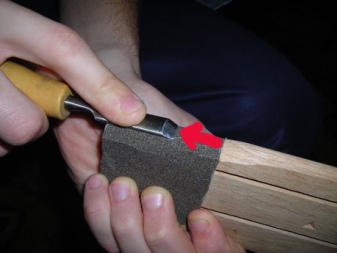

How to choose the right one?
You can always find an option that will suit both quality and cost. However, there are some general tips when choosing a tool.
- The best tools are made of special steel (marking 8XF or 13X). This material is characterized by a large amount of carbon in the composition, as well as chromium. Sometimes tungsten can also be seen in the composition.
- The hardness should be at the level, models with markings below HRC 59.60 will not work.
- The optimal length is considered to be 15-10 cm. The larger cutters withstand a lower load. The handle should be made of wood or durable plastic.
- If the brand name is not indicated on the product, then most likely this is a fake. Counterfeit tools, as cheap as they are, can quickly break or become damaged.
- The steel must be of high quality. You can determine this characteristic on a grindstone. When sharpening, a quality product will have burrs that can be easily removed. If the material was not hardened correctly, such particles cannot be removed. The tool will be dangerous during operation because the steel is too soft. The chisel can break after the first sharpening, and the blade will deform even with a little effort.

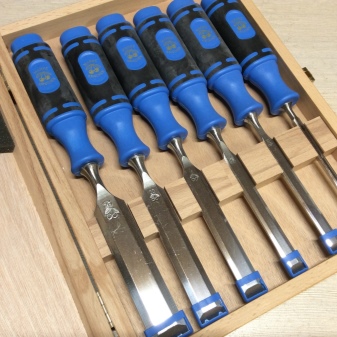
Small bumps or burrs are normal for any tool. These irregularities are easily corrected by sanding. Chips or rust can be removed in the same way. The 3-level sharpening stone sharpens the tool with ease.
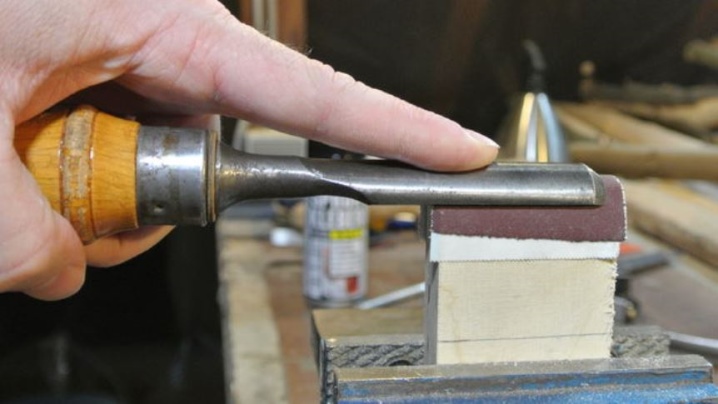
Manufacturers
You can always purchase a set of all the necessary tools. The most popular are Bahco, as well as Sandwik or Narex. Quite good models can be found in Japanese companies. Among Russian products, it is worth highlighting the toolkit of firm "Enkor".
Below is a list of the most popular toolkit manufacturers.

Ashley iles
The instrument is perfectly sharpened and retains sharpness for a long time. The chamfers are quite high quality. The handle is made of bubinga wood and is comfortable (owners of large and small palms can be operated equally well with the tool). However, the edges of the brass hinges at the junction with the handle are too sharp. The brand produces sets of 11 and 4 tools that do not include a roll or box.

Narex
The instruments are of average quality, but the set has good technical characteristics. The handles are made of beech, but they “sin” with imbalance. Additional alignment is required at the base of the blades, but sharpening is easy. The brand produces sets of 10, 3 and 4 instruments.Wooden case or rolls are not included in the set.
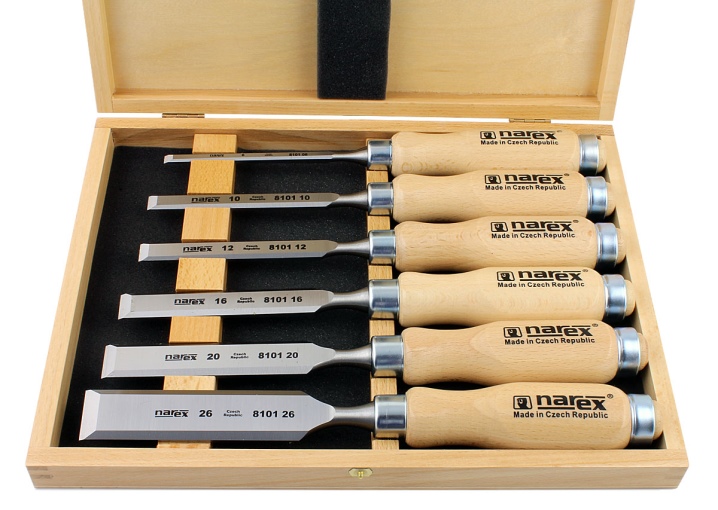
Blue spruce
Each tool is handcrafted and tested with one of the best results. The handles are made of maple and impregnated with resin. The device easily withstands shocks and is not afraid of mechanical damage. The incisors are too wide and their edges are pointed.
This option is well suited for making corner joints, but the edges will have to be blunt a little (this is necessary to protect against possible injury). Steel of excellent quality, comes out under the A2 marking. It is better not to use an electric sharpener for such a high-quality tool or to punch it with a mallet. Despite the high cost of the products, the set does not include a roll-up or a case.
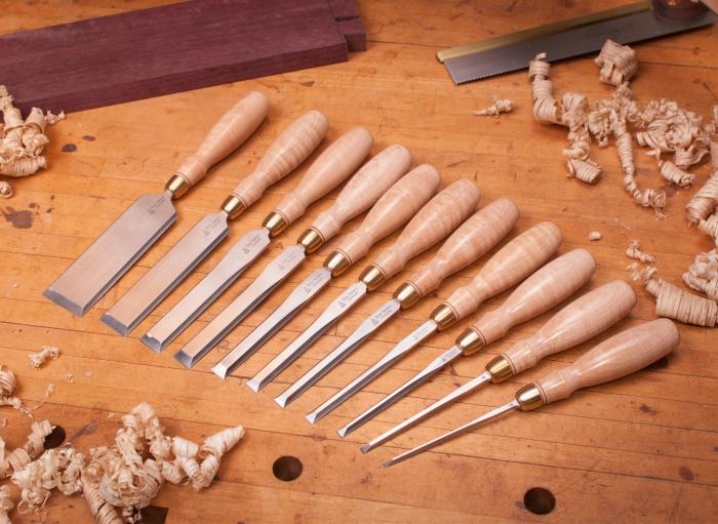
Irwin Marples
Before us is a representative of a very popular brand. The difference between the new models is the handle, which is very well suited for the use of a mallet. However, it is difficult to change the trajectory of the tool during operation. The blade quickly loses its original sharpness, as, indeed, almost all inexpensive tools. The assortment includes sets of mallets and 3 chisels.
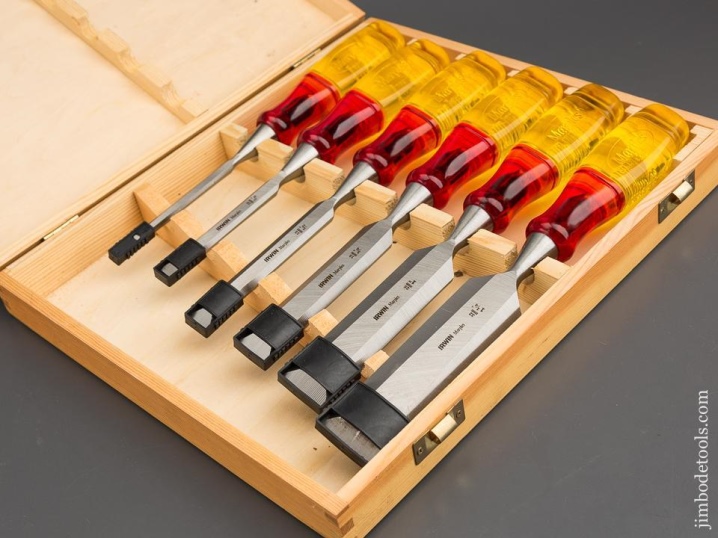
Lee valley
The blades of such models are very easy to sharpen, and they retain their sharpness for a long time. However, for some specimens it is necessary to level the base, which takes about 30 minutes. Besides, the tools have too sharp edges, the handles have a ribbed structure and cannot be called too comfortable to work with. However, the cost is reasonable and toolkits of different sizes and types can be found in the mid-price segment.
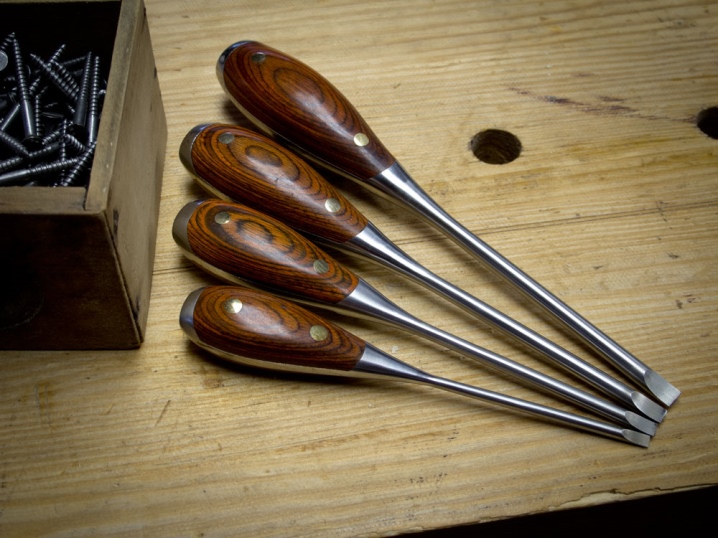
Lie-Nielsen
The tool handle is attached with a "skirt" mount. If the connecting element looses, then the handle spike will need to be adjusted to the mounting groove. You should hit part of the joint with a mallet several times, and then you can work with the tool again. The chisels are handcrafted and can be purchased in sets of 9 or 7 models. The set includes a leather roll.
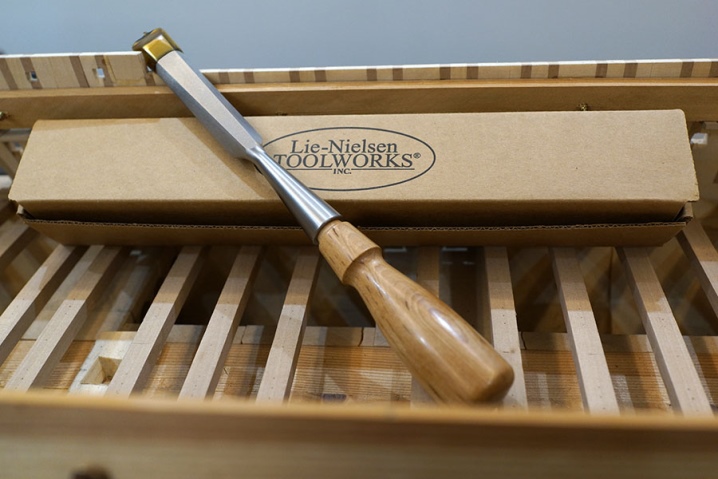
Pfeil
The Swiss brand is quite famous among domestic consumers. The chamfer is polished to a mirror finish. Models are equipped with a mini bevel. The incisors are easy to sharpen, durable and made from premium steel. The faceted handle is very comfortable, but the transition at the ring is not as smooth as we would like.

Robert sorby
The handle of the model is made of boxwood and perfectly withstands working with a mallet. However, some users note the inconvenience in the work, the rings quickly loosen. The blades are the smallest when compared to other models from other brands. Because of this, the incisors quickly become dull.
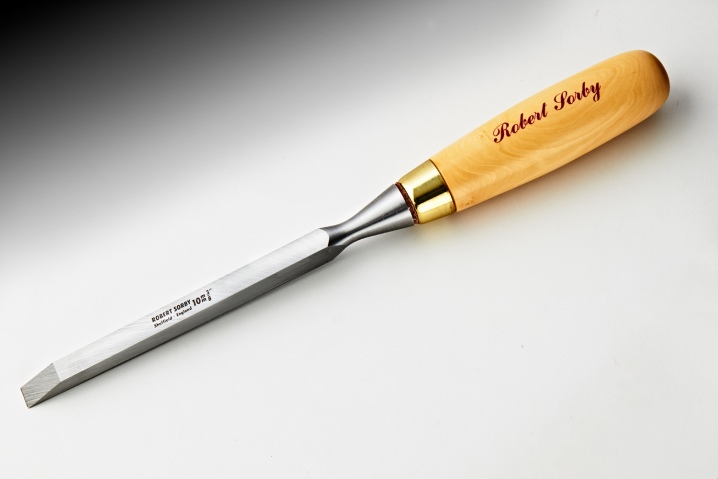
Robert sorby sheaf river
The model has an unusual handle design. The grips have an octagonal shape, are made of ash and are quite comfortable to use. The blade dulls quickly. Traditional sticks are about 32 mm longer than these models, and the tools from this manufacturer are tapered. Their configuration is designed for a smooth transition from ring to blade, which is very convenient for manual work.
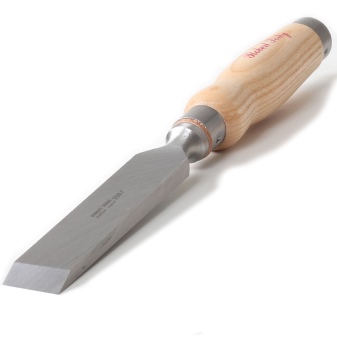
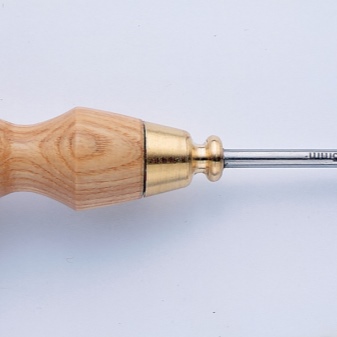
Stanley Bailey
The models of this brand have large-sized beech handles. The handles are not well balanced, the edges are flat on the sides and interlocked with wide metal rings. The manufacturer has provided titanium blades. The set includes a leather roll.
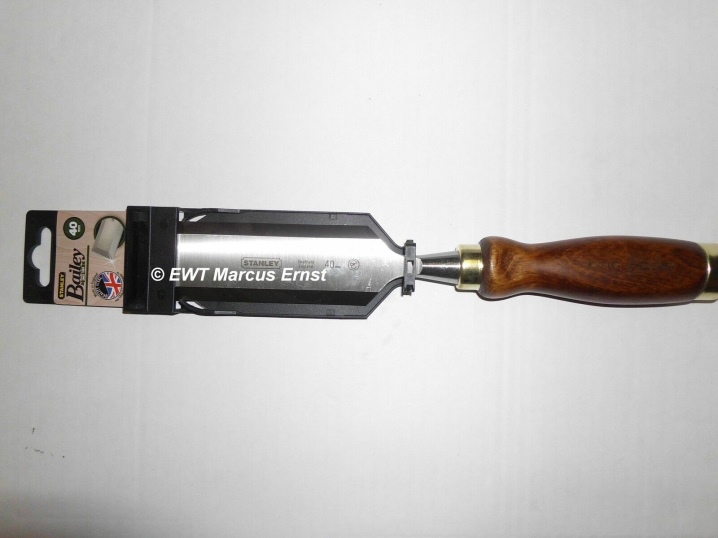
"Turbodrill"
Such chisels were produced during the Soviet era, but with a strong desire they can be found even now.
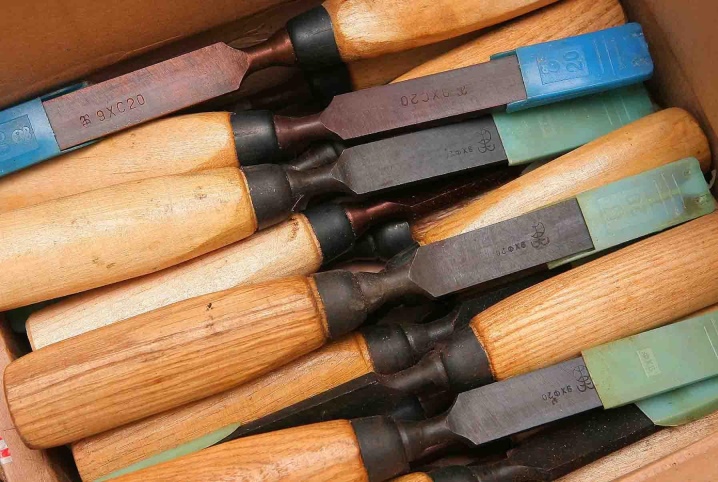
How to use?
In order not to accidentally damage the wood, create a beautiful pattern without injuring your hands, you must use a chisel correctly. The scope of this tool determines the specifics of the entire work.
You can use a chisel in two ways. The first option involves only the manual work of a specialist. For more complex work, in addition to the chisel, you need to take a hammer. You can work with the device using 3 main techniques. For pruning, the wood fibers should be cut lengthwise.Side carving is characterized by the removal of wood fragments at a certain angle. The ends are trimmed by cross-cutting the wood fibers.
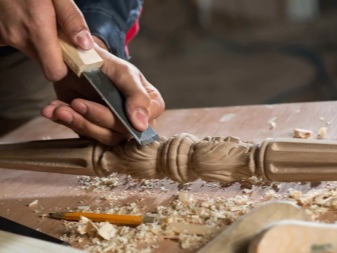
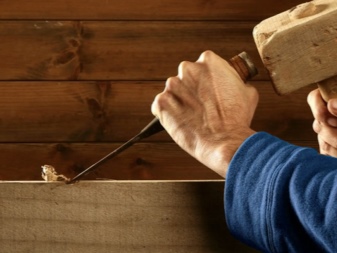
In order to complete the required amount of work with the help of a chisel, you need to follow the following tips.
- Pruning. When working, the tool should be tilted slightly at a slight angle. The sharpened blade must be in contact with the material. You need to hold the handle with one hand, and put the other on the material so that the thumb of the working hand is located towards the handle.
- Side thread. For a side thread, the principle is the same as for an edge. You can use different options for the tool. Side or straight chisels will do. Some experts use a circular tool in this work. To create a groove, you must first form the cuts, and then select.
- Trimming the ends. For this procedure, place your hands in the correct position. With one hand, you need to grab the handle, and the palm of the other hand should be positioned as follows: the metal plate should be clamped between the index and thumb. The work surface should move freely up and down the material. If you lightly press down on the tool in motion, you get a straight and smooth cut.
It can be difficult for a beginner to operate the tool, but soon practice and experience will do the trick.











The comment was sent successfully.